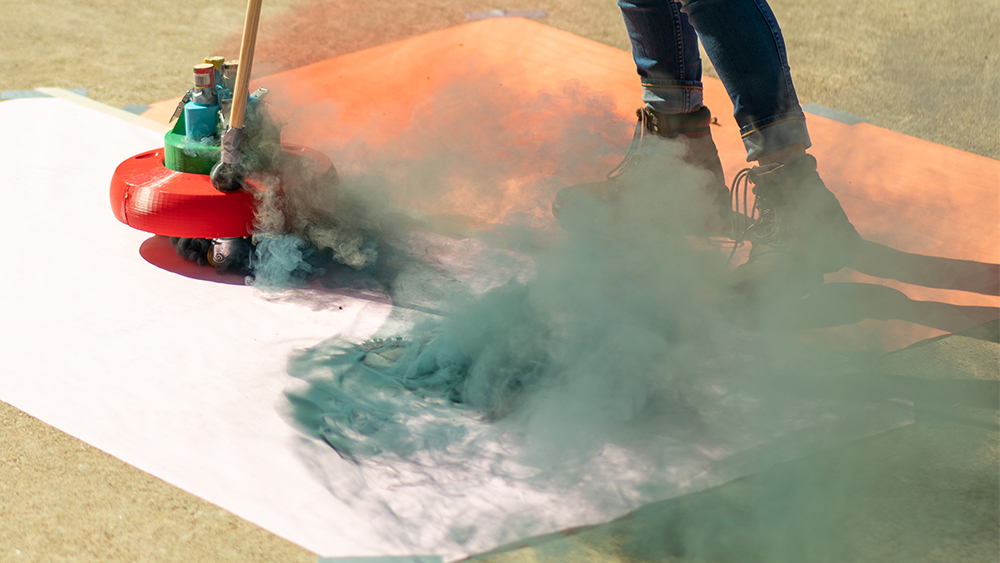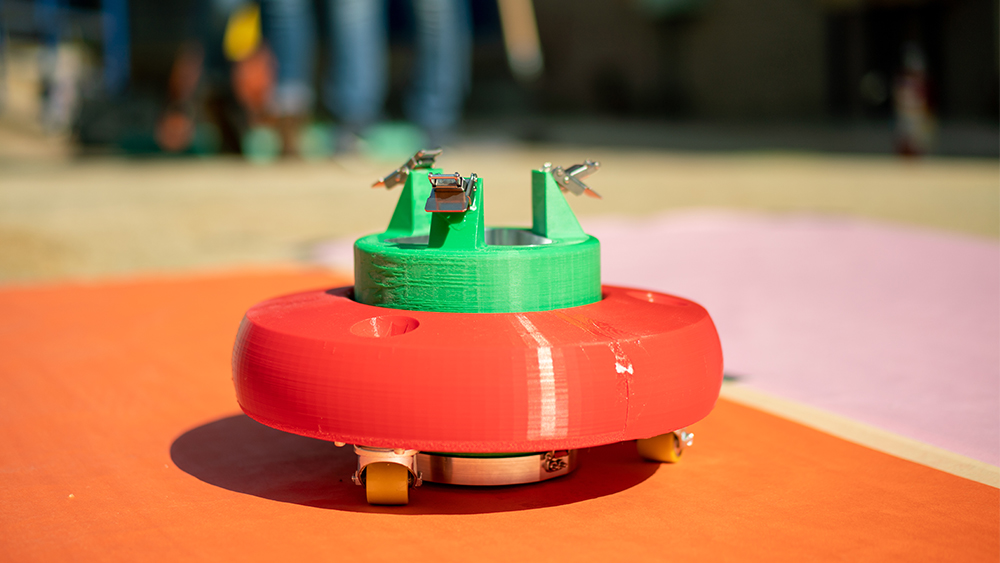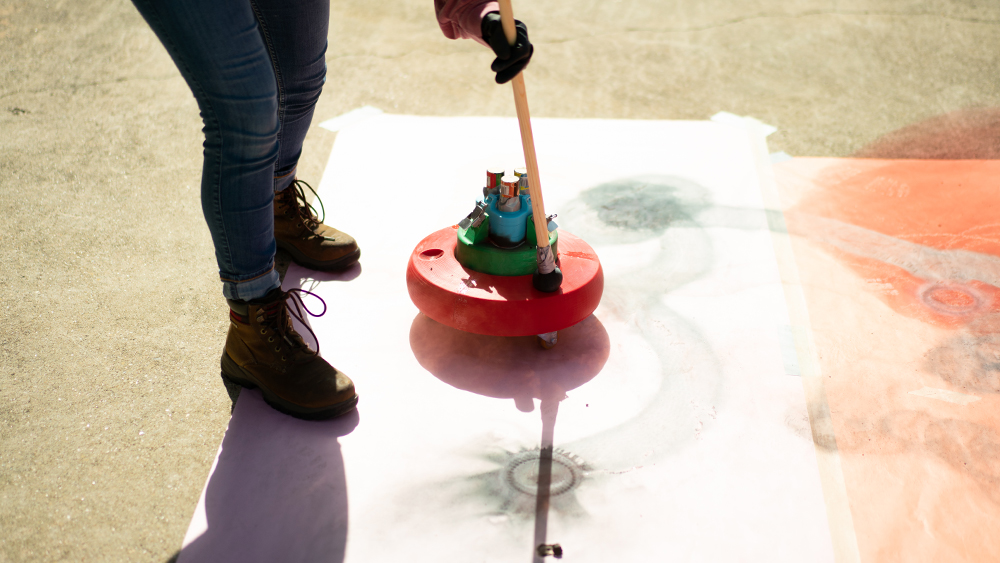
A “Self-Portrait after the Spanish Flu” was painted by Edvard Munch in 1919 after the disease infected an estimated 500 million people around the world. Sir Isaac Newton discovered gravity when Cambridge University shut down due to the Great Plague of London, forcing him to return home where an apple mysteriously fell onto his head. A team of students has paired with Rosemarie Fiore, a pyrotechnic painter, to make sure that art, creation and discovery continue during the COVID-19 pandemic.
“Every member of the team was drawn to the project because it lies at the intersection of art and engineering,” Jon Williamson said, the team’s project manager. “Creating a robust tool that provides a substantial improvement from each of the previous three tool iterations would give the team a sense of accomplishment founded on the importance of art in each member’s life.”
Fiore is a renowned artist based out of New York known for her firework paintings crafted by custom-made pyrotechnic art tools. Fiore began collaborating with Texas A&M University in 2018 when she used a tool created by students as part of painting “Smoke Painting #44” which now hangs in the Zachry Engineering Education Complex.
“I was one of the few artists chosen to be a part of the collection in Zachry, and that’s my connection to Texas A&M,” Fiore said. “It’s been a joy working with the students on capstone projects, and I’m always impressed with their creativity, thinking outside of the box and their openness to my unique process of using tools that harness pyrotechnics.”
Williamson’s team was passed down this senior capstone design project after a previous team had made significant developments on the tool, which they called the Smoke Paint Tool (SPT). The team provided a terrific starting point, but identified structural issues/flaws that weren’t able to be completed through hands-on troubleshooting and redesigning due to COVID-19 complications.

The current team composed of Katy Armitage, Raul Carrillo, Nicholas Harper, Faith Leskowitz and Williamson took the SPT and sought several modifications. This included making the tool more robust, allowing the dispersion chamber at the center of the tool to rotate fully, stopping smoke leakage and mitigating soot buildup on the tool's bottom plate. These improvements required adding several pieces, such as a detachable platform to collect soot, making modifications to the dispersion chamber to allow for rotation and many other adjustments to ensure the tool's usability. Their new design is called the Pyrotechnic Art Tool (PAT).
“Although the PAT differs in many ways from the SPT, it is also based around the chassis and chamber subassemblies,” said Williamson. “The modifications to the SPT were based on direct client feedback. The current design stemmed from a concept dubbed the ‘Platform Tool’, due to the presence of a detachable platform to collect soot and mitigate soot blockages on the bottom plate of the tool.”
The tool works as a pressure vessel. By lighting smoke canisters and placing them in the tool, the canisters are able to produce large amounts of smoke. The smoke moves into the dispersion chamber, causing a rise in pressure in the chamber. The difference in pressure between the chamber and the environment draws smoke through holes in the tool’s bottom plate and onto canvas, creating varying marks as the artist manipulates the tool. The PAT's function is to create broad and soft marks on Fiore’s pieces that typically make up elements of her art’s background.

“What the tool does which is different than other tools that I’ve created, is that the interior of the tool rotates, as well as the exterior when you use it,” Fiore said. “It has both rotation and counter-rotation that depends on movement and how I am working with the tool.”
This device is not only complicated but potentially dangerous if not constructed correctly. The team began working on their project at the end of May but could only meet virtually much of the time. Although the first part of their project, which included conceptualization and understanding the customer, worked on this platform, the second part presented challenges.
“The second phase of the project was slightly more difficult to overcome in a virtual environment due to the fact that this entailed actually fabricating and assembling the tool,” said Williamson. “The team was able to achieve our goals throughout this process by clearly communicating with each other along every step of the way.”
Fiore, who also communicated virtually with the team, was incredibly happy and impressed with the student’s ability to continue the project despite the odds stacked against them.
“The students have had a unique experience because of COVID-19 restrictions,” said Fiore. “Their flexibility and professionalism when they were unable to collaborate in person has been impressive. As an artist in the creative field, which can include engineering, social interaction is needed. However, they continued to hit deadlines, which I give them a lot of credit for. I look forward to finishing with Williamson’s team.”
For more information about the senior capstone design program or to sponsor a future capstone project, email Dr. Joanna Tsenn.